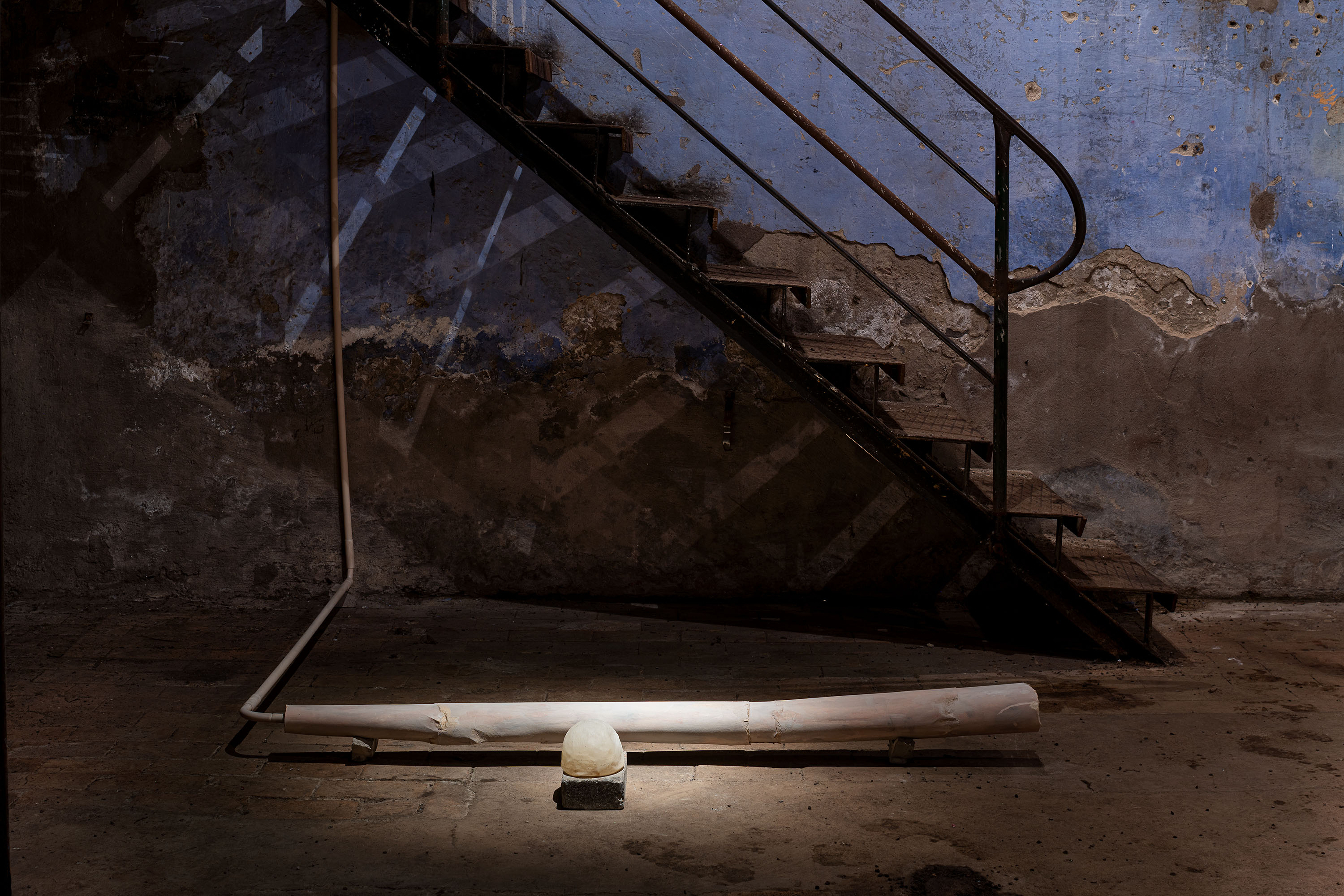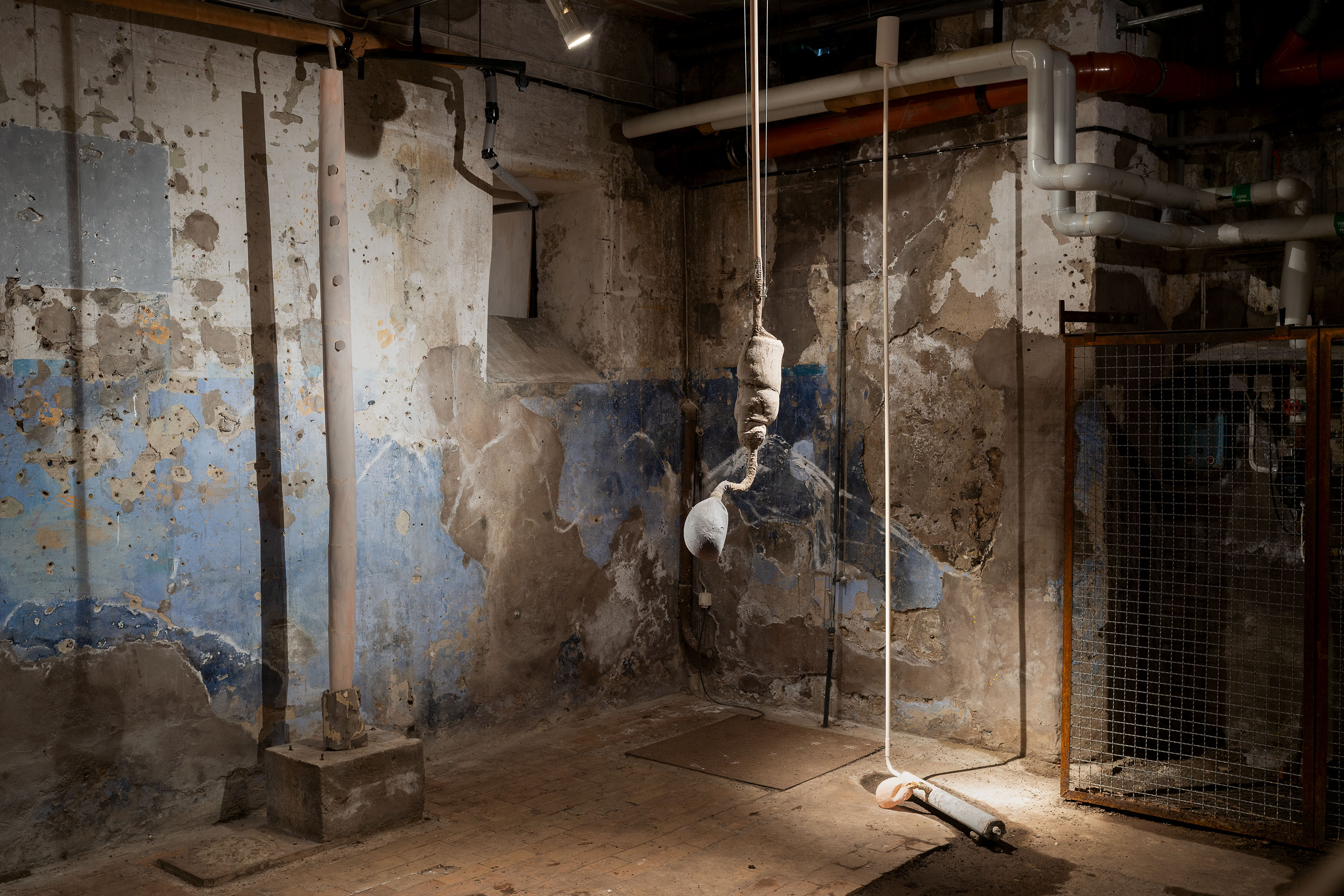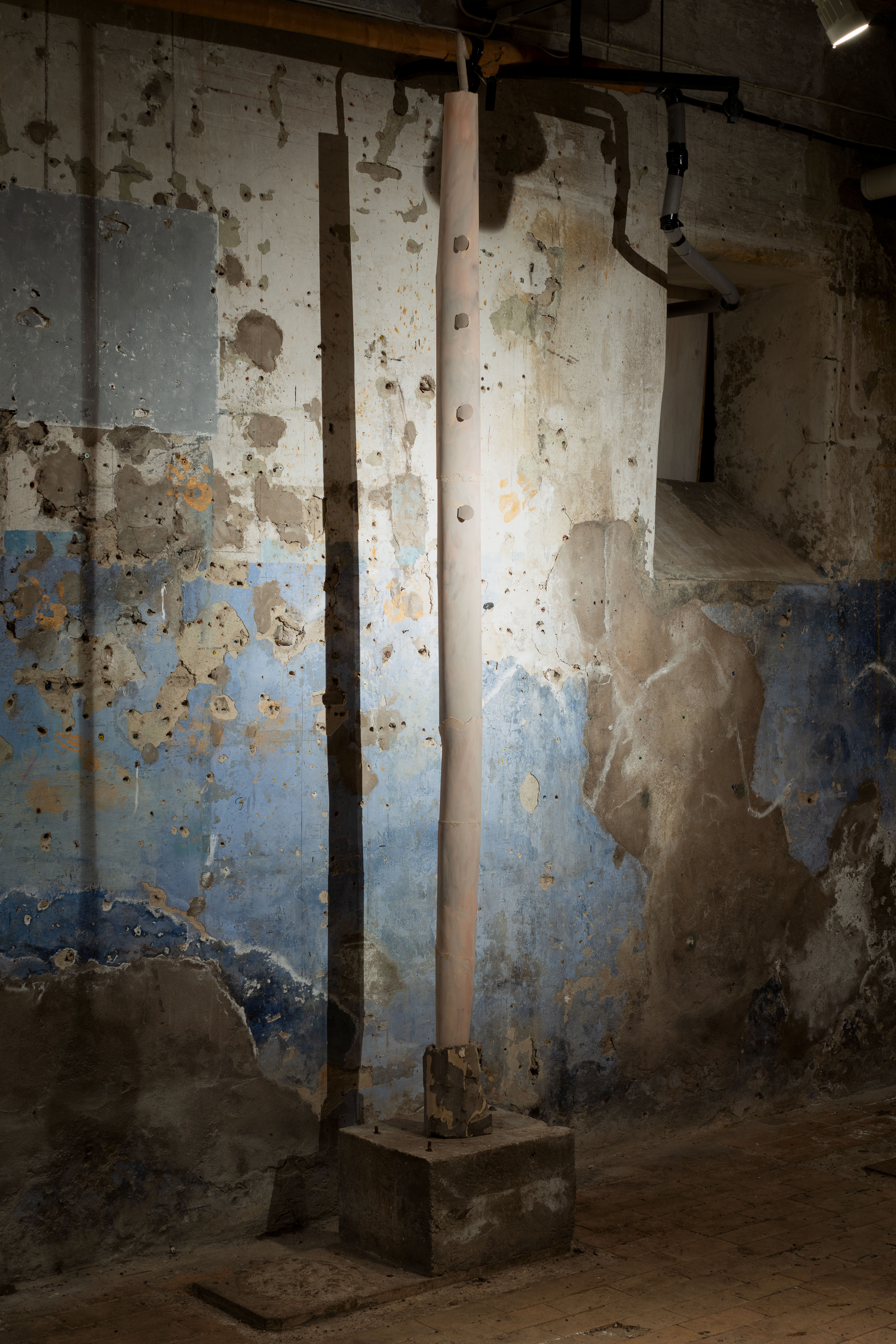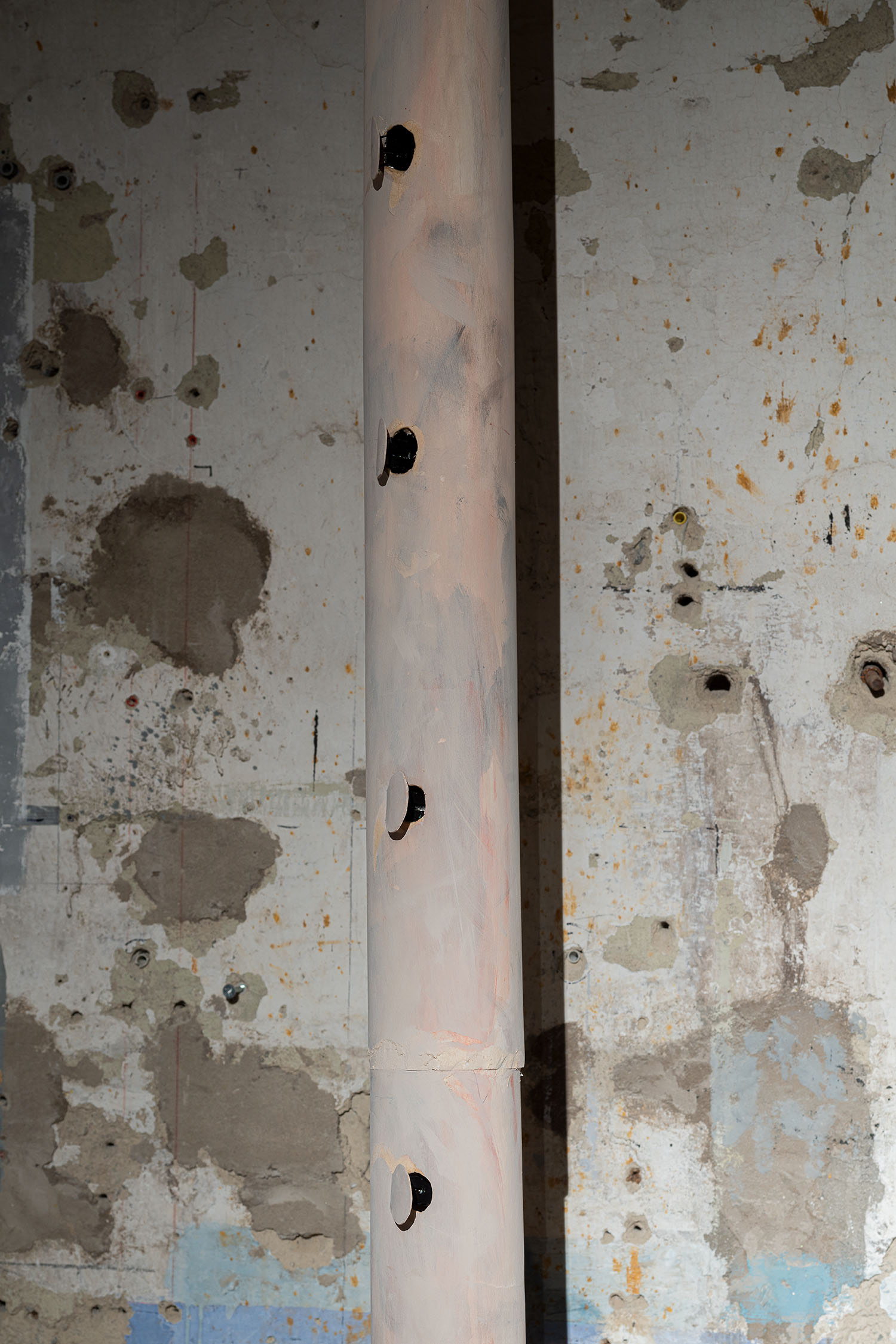
~
Speaking Bones,
Singing Limbs
(2021)
Sound Installation / 20 min Loop
Solo Exhibition at Galleri Konstepidemin in Gothenburg
- sound and robotic engineer
Johannes Ekdahl Du Rietz
-photos
Hendrik Zeitler
~
though betrayed, love lives and grows with the pain, sleepless anguish are eating away at the limbs of this poor creature until they wither, the skin becomes meagre and dry, and out into the air the bodily fluids vanishes, soon she has but her voice and her bones. bones turning to stone, they said, but her voice she held onto.” Ovid, Metamorphoses, Book 3
Sprung out of the roman myth of Echo, the work is exploring materiality in voice and the body’s transience in relation to the voice. The sculptures; a frail assemblage of paper, concrete and latex, forms a curious mix of bones, trunks and windinstruments that has the capacity to breath, creak and sing.
The installation consists of sculptures all programmed to have unique patterns of movement and sounds. The work becomes a composition in the room where every sculpture moves or sounds on given times in a loop of 20 minutes. Paperflutes with valves that open and shut while playing tunes, go in and out of the airy sounds of the concrete and paper sculptures with their latexlungs that slowly rises and falls in breathing. The sounds are edited recordings of harmoniums and bone flutes.
/ The fate of Echo is illustrated as different stages of disappearance; metamorphoses. In Ovid’s Metamorphoses Echo’s body fades and decomposes of sorrow as a result of the unrequited love she has for Narcissus and remains in the world only as a voice (an echo). In the work Daphnis and Chloe by Longus Echo is portrayed as the object of the God Pans love. When Echo dismisses his advances, Pan grows furious and in his wrath drives the shepherds of the fields mad and they tear Echos body to pieces and scatter them across the world. But the fragments of Echo’s body refuses to be silent and keeps on singing below the ground as to bear witness of her cruel fate.
In the essay by Judith Greenberg ,The Echo of Trauma, The Trauma of Echo, her destiny is linked to traumatic narratives; in that these often don’t follow a chronologichal order but rather compulsively returns to the same event and repeats the same phrase over and over. The myth of Echo reflects the need to repeat and sing out even when the body is dissolving and seemingluy dissapears. To speak even though your story is disjointed; as a way of taking one’s voice back, put the fragments of the story together to a narrative and echo that can make you stop and listen, and turn the isolation to dialogue. /















